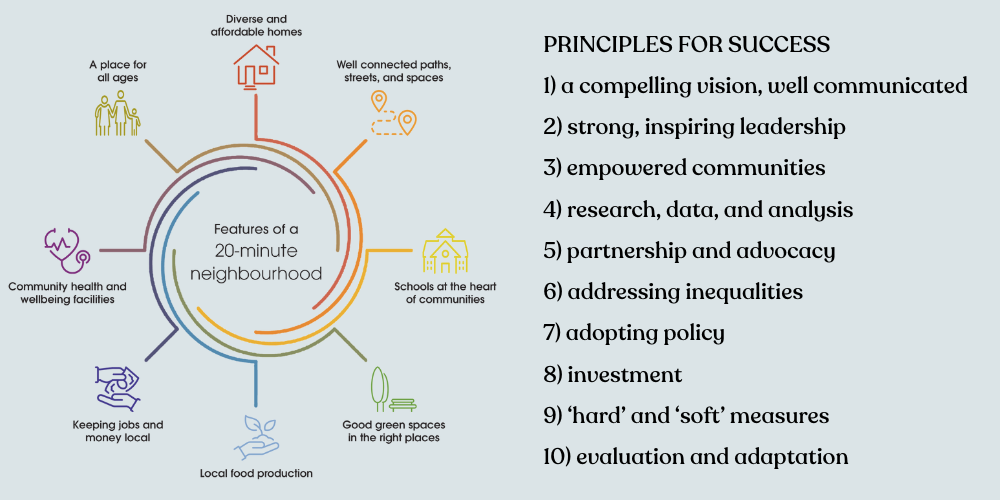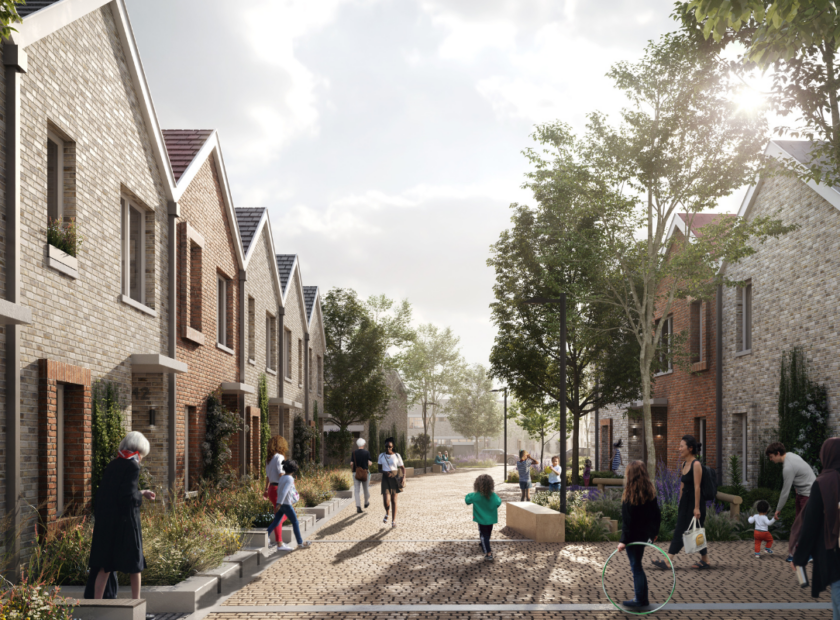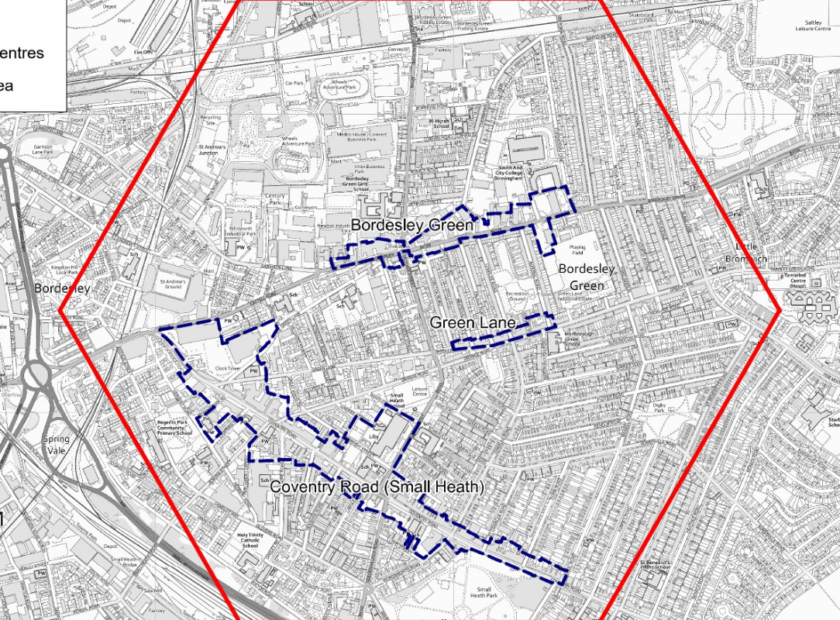The TCPA’s Guide to 20-Minute Neighbourhoods identifies eight ‘features’ that any place implementing a complete, compact and connected approach to place-making should consider, and ten ‘principles for success’ taken from the experience of places around the world creating 20-minute neighbourhoods.
As part of our ongoing work to share resources and learning from places around the UK, the TCPA has worked with partners to create these case studies to show how different places are bringing 20-minute neighbourhoods to life in their areas.
Principles for success, and features of 20-minute neighbourhoods

Resources

‘Living Well Locally’: a community vision
Drymen is a small rural community reliant on cars to access basic everyday facilities and services.
Principle for success: a compelling vision, well communicated.

Hailsham: the 10-minute town
Hailsham Town Council created a neighbourhood plan framed by the concept of Hailsham being a ’10-minute town’.
Principles for success: a compelling vision, well communicated & adopting policy.

Regenerating a post war housing estate
The Abbey Estate in Thetford is a classic example of a 1960’s Radburn layout.
Features: well connected paths, streets and spaces. Principles for Success: empowered communities & long term investment.

Birmingham’s vision for liveable neighbourhoods
Liveable neighbourhoods is one way the City Council are tackling local challenges at the neighbourhood scale.
Principles for success: research, data and analysis.

A wellbeing hub on the High Street
This unique wellbeing hub, in Dundas Shopping Centre, Middlesbrough, is an example of 'health on the high street'.
Features: community health & wellbeing facilities. Principles for success: partnership & advocacy.

